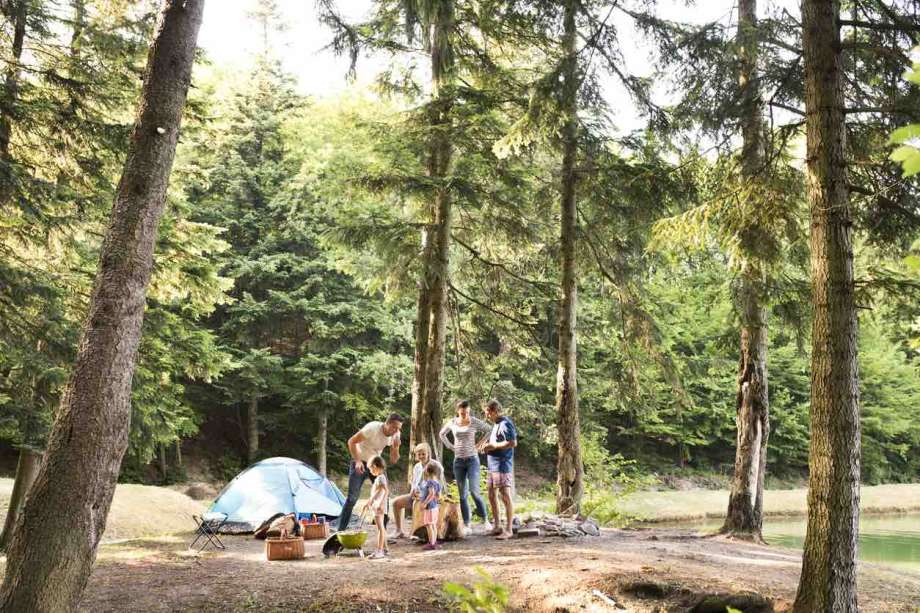Before your family goes hiking or camping this summer, read up on some common-sense safety tips.
Planning and preparation
Safety Tips for Hiking and Camping
Hiking is an ideal warm weather activity for families. It gives you and your kids a chance to be active, explore nature, and spend time away from the lure of television and video games. Whether you're planning on a quick day hike, or a camping adventure, take the time to review some basic safety guidelines before you hit the trail.
Plan Your Itinerary The first step in planning a hiking or camping trip is deciding where and when to go. The
United States National Park Service offers a handy tool to find parks and trails in your state. You can also explore state parks, and independently operated trails such as the
Appalachian Trail, and the
Audobon Society wildlife sanctuaries. When deciding on a hike, keep in mind the difficulty level of a trail, the type of terrain you'll be crossing, and how far it is from home.
Just as important as the location of your hike is when to go. Trails in the northern part of the country, or at high altitudes, may hold deep snow well into spring. Even when the snow does melt, you may have to deal with the resulting runoff. On the other hand, southern or low-altitude trails may be scorching hot in the height of summer. Choose a seasonally appropriate hike, and keep an eye on the weather forecast before you go.
It's also a good idea to leave a copy of your itinerary with somebody at home. In addition, many trails have a registry at the trailhead that you can sign, so park officials will know who's on the trail.
Hike at Your Own Level Make sure to ease your kids into the activity of hiking. Get a few easy hikes under your belt before attempting a day-long or multi-day trek. While most kids will have plenty of energy for the journey, not all of them will have the attention span. For your first few hikes, don't worry about how far or long you go. Try a local walking trail, where it's easy to head back to the car on short notice. Once your child has shown both aptitude and interest, you can consider planning longer journeys deeper into the wilderness.
Pacing is important. Frequent breaks will help kids conserve energy and hike a longer distance. Don't simply march across the trail from start to finish. Stop and appreciate anything that catches your eye, like a waterfall, an interesting rock formation, or a body of water. Encourage your kids to be observant of nature.
Get the Right Gear The most important piece of hiking gear is a good pair of boots. Look for boots with thick soles and sturdy ankle support, for keeping you upright across uneven terrain. Boots should lace up tightly, but leave room for you to wiggle your toes. Waterproofing can be helpful, as well. Make sure to break in your boots before your hike. Try to walk a few miles in them over a period of days or weeks.
Because kids' feet grow so quickly, hiking boots can be an expensive accessory. But it's not always necessary to buy them a new pair for each hike. Sneakers can work, but follow the same guidelines that you would for boots: ankle support is essential, along with sturdy, gripping soles. Think high tops as opposed to tennis shoes.
The right socks are just as important. Don't wear cotton athletic socks - they get soggy quickly, and don't dry out. Instead, look for a wool-poly blend, which will wick away moisture and help reduce the chances of blisters. It's a good idea to bring a few extra pairs of socks for longer hikes, or hikes across soggy terrain.
On multi-day backpacking trips, you'll want a pack that will keep all your gear in place high and tight against your back. External-frame backpacks, which have a metal skeleton outside the bag, are often a good choice for this, although they tend to be heavier than internal-frame packs. No matter which type you choose, pick a backpack with thick straps and strong buckles. The idea is to keep the contents tightly packed and immobile, which will help you keep your balance and prevent back strain.
